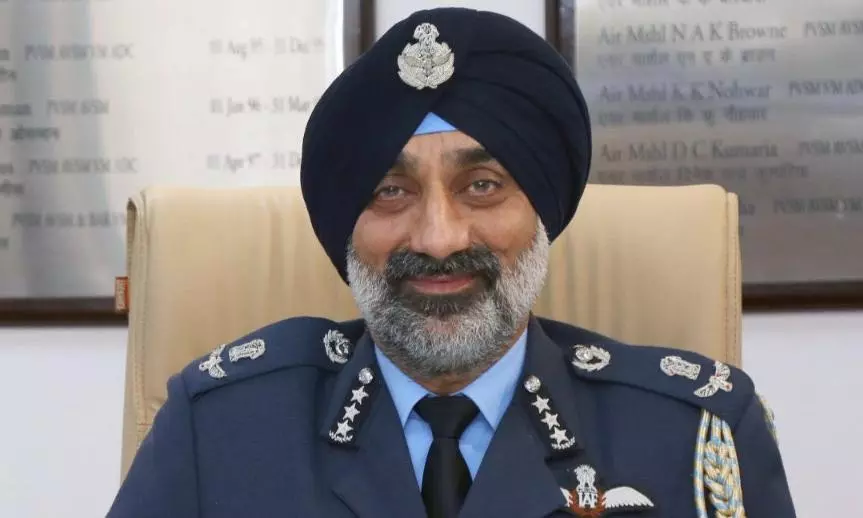AA Edit | Air Chief spells out how we must catch up with Chinese
By : AA Edit
Update: 2024-10-07 18:38 GMT

A day before its 92nd anniversary, the Indian Air Force put on a spectacular show of aerobatics, simulated rescue missions and flypasts with tricolour smoke emanating from the powerful engines of a wide selection of its air fleet over the skies of Chennai. With a veritable sea of humanity on the Marina Beach serving as mass spectators to its prowess, the IAF made its point lucidly in the air on Sunday.
Even so, everything is not so cool on the ground, as the Air Force chief Air Chief Marshal Amar Preet Singh pointed out in a blunt message to the Indian defence manufacturing sector about the need to catch up with China in technology and, even more importantly from the fleet strength point of view, to raise production rates of defence equipment.
In a frank assessment a top serving officer alone could air with credibility, the head honcho spelt out with stunning clarity that the IAF, with 31 squadrons, is way behind the required number of 42 fighter squadrons. And the Air Force can move towards such strengthening of its fleet only if the domestic sector can match Chinese manufacturing standards and speed and offer more fighter jets.
It is clear from a study of the modern warfare being fought currently in Ukraine and Gaza, which also extends sometimes to targeted strikes, that air power will dictate the course of conflicts. In a peaceful world that everyone desires, there should be no need for extreme capabilities. However, deterrence demands that the IAF be armed with the very best technology for it to remain an elite arm of the Indian security forces.
The most significant aspect of military capabilities is not only in the technology but also the number of aircraft that the IAF would need to protect a vast country with hostile neighbours. Air power of defensive and offensive capabilities is what will define the pecking order of nations in the future, which is why modern forces are equipping themselves also with armed drone technology, which is needed these days in strategic defence too.
It is heartening then that the IAF chief has revealed that India has got three of five S-400 anti-ballistic and anti-aircraft defence systems, costing $5 billion and capable of engaging 36 targets simultaneously up to a range of 5,790-km, that were ordered from Russia and the process of getting the remaining two will be completed by next year. While this enhances defence capacity, equally pressing as a need would be to equip the Air Force with 114 more aircraft it has ordered for the multi-role fighter programme as soon as possible.
It is interesting that the Air Chief Marshal notes that India must make more of its aircraft in India to fill its entire inventory with domestically manufactured flying machines in the next 20 years or so to avoid any clash of interests and changing interests that may become a choking point, as he puts it. A point of anxiety the IAF chief harbours is about the speed at which HAL can deliver orders like the one for 83 advanced Tejas aircraft already placed and its capacity to equip IAF with its fleet requirements in time to make a difference.
Given the geopolitics of the day and China’s seemingly unlimited beefing up of the areas along the LAC, it requires little imagination to perceive the need for India’s defence preparedness to be able to catch up with our neighbours and be prepared with the deterrence to keep the nation safe.

